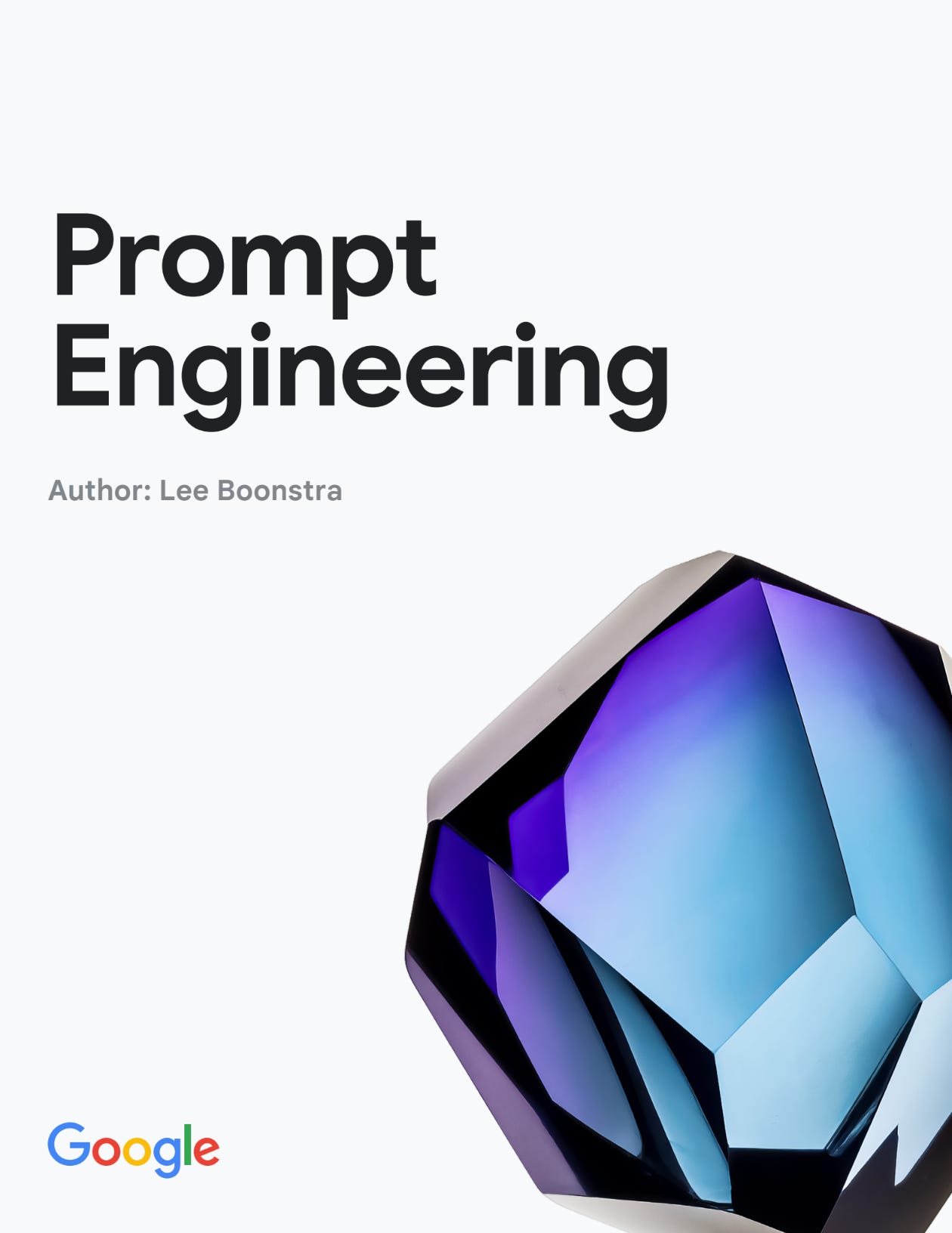Unlocking the Power of Prompt Engineering
A Deep Dive Into Google’s “Prompt Engineering” Whitepaper
Prompt engineering has quickly become one of the most essential skills in the age of AI and large language models (LLMs). For anyone working with LLMs, whether you're a developer, technical writer, analyst, researcher, or just an enthusiast, the quality of your prompt can make all the difference in harnessing the full potential of generative AI systems. That’s why Google’s newly released whitepaper, “Prompt Engineering” by Lee Boonstra, is a must-read resource. Let’s explore what makes this guide so valuable for both beginners and experts.
What Is Prompt Engineering?
At its core, prompt engineering is the art and science of crafting effective inputs (“prompts”) that instruct LLMs to produce high-quality, relevant outputs. You don’t need to be a machine learning engineer—anyone can write a prompt. But as the whitepaper emphasizes, writing a great prompt is an iterative process that benefits from understanding how LLMs predict and generate responses.
The guide dissects aspects like model selection, configuration (temperature, top-K/P sampling), prompt structure, word choice, and more—all of which significantly affect the quality of AI-generated content.
What’s Inside the Whitepaper?
The whitepaper provides a comprehensive tour of prompt engineering—and it’s more than a simple primer. Here’s a taste of what you’ll find:
1. Foundational Concepts & LLM Configuration
Understand the mechanics of LLMs: how they predict tokens, why configurations like output length matter, and how parameters like temperature, top-K, and top-P shape your results. The whitepaper demystifies these often-confusing terms and offers actionable settings for different creative tasks.
2. Prompting Techniques
A huge highlight is the systematic walkthrough of various prompting approaches:
Zero-shot, One-shot, and Few-shot Prompting: From simple task description to including targeted examples.
System, Contextual, and Role Prompting: Set the “big picture” for your LLM, provide relevant context, or assign personas for your outputs.
Step-back and Chain-of-Thought Prompting: Use reasoning, breaking down complex problems into logical steps for more accurate results.
Self-Consistency & Tree-of-Thoughts: Learn how multiple reasoned paths boost the reliability and depth of LLM answers.
ReAct and Automation: Explore automated tools for prompt engineering and advanced concepts like integrating LLMs with external tools.
3. Code-Centric Prompting
Whether you want LLMs to write, translate, debug, or explain code, the paper includes step-by-step examples—complete with sample prompts and outputs you can adapt for your own projects.
4. Best Practices & Pitfalls
The guide is rich in practical advice:
Provide examples.
Be clear, simple, and specific.
Use positive instructions instead of long lists of things to avoid.
Control output length and structure (JSON, XML, etc.).
Iterate and document your prompt experiments.
Plus, the paper highlights common bugs (like the dreaded "repetition loop") and offers strategies to fix them.
Why Does This Resource Matter?
Prompt Engineering isn’t just theory—it’s packed with templates, editable tables, real-world code, and recommendations for tools (like Vertex AI Studio). It provides a framework for:
Faster iteration and higher prompt quality
More reliable, safer, and relevant AI output
A shared vocabulary and toolkit for teams working in AI
Furthermore, it stays current with trends in multimodal input (text, images, code), automated prompt generation, and best practices for production-ready AI workflows.
Who Should Read It?
AI Practitioners: Level up your skills with advanced strategies.
Developers & Engineers: Save time with code, translation, and debugging prompt patterns.
Educators: Find clear, structured explanations and examples.
Product Managers & Business Leaders: Understand the capabilities and limits of prompt-based AI.
Final Thoughts
Google’s Prompt Engineering whitepaper by Lee Boonstra is a thorough, example-rich, and above all practical resource. Whether you’re just starting with LLMs or you’re an AI veteran, this guide will help you move from casual prompting to mastering the craft.
If you’re serious about AI, this is a must-bookmark—and one you’ll come back to, time and again, as you develop and refine your prompt engineering skills.
Have you read the whitepaper or tried these techniques? Share your experiences or favorite tips in the comments!



